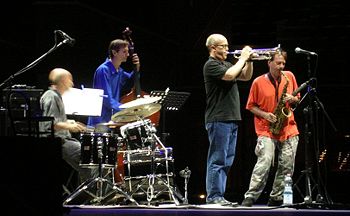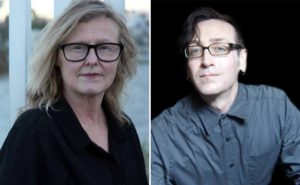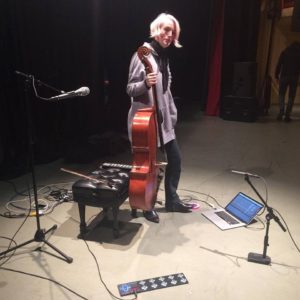
Composer Portrait – Beat Furrer
Miller Theatre
Thursday, February 2, 2017
Either/Or Ensemble; Richard Carrick, conductor
By Christian Carey
NEW YORK – Miller Theatre has long had plans for a Composer Portrait evening of Beat Furrer’s music. In 2001, the event was disrupted by 9/11, which made it impossible to bring in the musicians slated to perform. After a long hiatus, the American ensemble Either/Or, conducted by Richard Carrick, was invited to undertake the first Miller portrait event in 2017, finally featuring Furrer’s compositions. The concert was masterfully performed and artistically satisfying. Alas, this time out, it was Furrer who could not attend. The Swiss-born, Austrian-based composer had taken ill and his doctors advised him against flying. One felt sorry that Furrer had missed a chance to hear his work at Columbia not once, but twice. What’s more, audience members were denied a planned onstage conversation with the composer about his work. Thankfully, Miller has continued to employ Paul Griffiths, one of the foremost writers on contemporary music, as their program note writer. Griffiths supplied a great deal of biographical background and information about the pieces, giving listeners a fine entryway into Furrer’s compositional aesthetic.
Carrick conducted the largest work on the program, the nonet linea dell-orizzonte (2012), which includes winds, brass, strings, piano, percussion, and electric guitar. Propulsive rhythmic activity underscored frequent glissandos. Rollicking gestures from Taka Kigawa’s piano, string harmonics, and guitar distortion, courtesy of Dann Lippel, created a hazy sound world, which gradually receded into syncopated brass, from trumpeter Gareth Flowers and trombonist Chris McIntyre, and percussion outbursts offset by rests, from Russell Greenberg and Dennis Sullivan.
Ira-Arca (2012), a duo for the unusual combination of bass flute and double-bass, was given a characterful performance by flutist Margaret Lancaster and bassist Ken Filiano. The piece frequently had the two mimic each other’s gestures, creating a nimble duet leavened with copious effects: exhalations, key clicks, flute and bass harmonics, slaps, and all manner of pizzicatos.
The quintet Spur (1998), for piano and string quartet, is one of Furrer’s most popular works. Kigawa played its repeated note gestures with fleet-fingered dexterity, while the quartet – violinists Jennifer Choi and Pala Garcia, violist Erin Wright and cellist Erin Popham – haloed the octaves, sevenths, and ninths of the piano part with pizzicato and altissimo lines, their sense of ensemble nicely complementing the keyboard ostinatos. In several places, the overall ascent of this central line breaks down into more diverse textures and gradual processes, but it is the piece’s inexorable drive and propulsive character that make it a strong entry in the composer’s catalog.
The second half of the concert was devoted entirely to the US premiere of one of Furrer’s most recent pieces – the clarinet quintet intorno al bianco (2016). It was in this piece that the composer most clearly demonstrated his affinity for spectral harmonies. Extended passages built out of overtones shimmering brightly. Clarinettist Vasko Dukovski blended seamlessly with the aforementioned string players, at times seeming to find the breath support to buoy impossibly long lines and performing with an enviably dulcet tone. The climax of intorno al bianco chimes chords with stratospheric highs before receding into a sumptuous denouement. It showed a different facet of Furrer’s music entirely. One felt that both his gestural and overtone-based pieces reveal potential avenues of further inquiry. While Miller tends to give composers a single portrait concert, another of Furrer’s music, this time with him in attendance to talk about it, would be most welcome.
 The Stone, the landmark non-profit performance space founded in 2005 by John Zorn and dedicated to the experimental and avant-garde, will move to The Glass Box Theater at Arnhold Hall on 55 West 13th Street, in the heart of New York’s Greenwich Village. Arnhold Hall is the performing arts hub for The New School, housing the three performing arts schools of The College of Performing Arts: Mannes School of Music, The New School for Drama, and The New School for Jazz and Contemporary Music.
The Stone, the landmark non-profit performance space founded in 2005 by John Zorn and dedicated to the experimental and avant-garde, will move to The Glass Box Theater at Arnhold Hall on 55 West 13th Street, in the heart of New York’s Greenwich Village. Arnhold Hall is the performing arts hub for The New School, housing the three performing arts schools of The College of Performing Arts: Mannes School of Music, The New School for Drama, and The New School for Jazz and Contemporary Music.








